City's Tabloids: More Like Mayor de Murderio!
CBS and the New York Post have had it with Bill de Blasio, who made it snow endlessly on our city and then had his wee caravan roll on through some stop signs in Queens. They also did some speeding. (The Daily News wood is hilarious.) No one has ever disobeyed the speed limit in Queens. New York’s worst monster! The Post has this to add: “The mayor — who vowed a transparent administration — routinely holds secret meetings and keeps events hidden from his public schedule.” Like he had a secret cocktail with Obama’s keymaster Valerie Jarrett! This city is a monstrosity. Everything is in ruins.
Here’s one thing you won’t read in the Post story:
So far this year, the new administration has filled more than 113,000 potholes. This time last year, the Bloomberg administration had filled about 50,000 potholes, and the year before, 42,000.
Let us go to City Hall and make like Kiev.
How Far Beretta Will Go To Make You Love Guns
by Abe Sauer
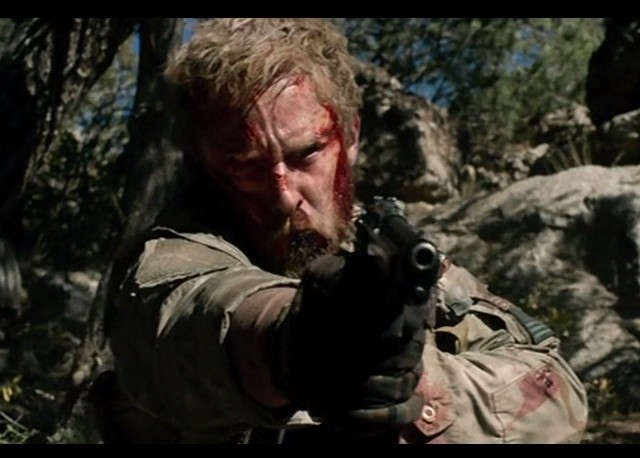
“We checked all the Hollywood crap at the door.”
— Mark Wahlberg, speaking about the making of Lone Survivor, in USA Today, December 22, 2013.
Even though it just opened on Christmas, Lone Survivor has made more money in the U.S. than Oscar-nominated thriller Captain Phillips, which opened back in October — and also stars Navy SEALs. Lone Survivor also beat big 2013 movies like The Hangover 3, Pacific Rim, Oblivion, and Elysium.
Lone Survivor has already made half as much in the U.S. as 1998’s Saving Private Ryan, the epic war film to which critics — and its marketing material — favorably compare it. It’s already beaten the war film it most resembles — Black Hawk Down — and its recent SEALs film peers — Act of Valor and Zero Dark Thirty. It’s creeping up on Platoon.
In Texas, at least one theatre canceled all of its other films in order to put, on all of its screens, the true story of 2005’s Operation Red Wings, in which three of a four-man SEAL team were killed, along with all aboard a rescue helicopter. It has a 90 percent audience “high” rating on Rotten Tomatoes and is now without a doubt by far the most popular film ever made about the the Naval Special Warfare Command’s Sea, Air and Land teams, which we know as the Navy SEALs.
But despite Wahlberg’s claim about “checking” all the Hollywood stuff, Lone Survivor is a terrific vehicle for product placement. One firearms maker, with a storied history of trying to attach its name to the Navy’s legendary teams, certainly saw the retelling of the last hours of three SEALs’ lives and thought: “What a great marketing opportunity.”
Beretta’s M9 pistol appeared prominently during one of Lone Survivor’s most heart-wrenching scenes: A SEAL more or less sacrifices himself for a teammate. The gun’s appearance immediately set off online discussions by those in-the-know.
In his last moments, the SEAL — portrayed by actor Ben Foster — draws a Beretta M9 and hopelessly tries to defend himself against countless Taliban fighters. While the Beretta M9 is the officially issued sidearm of the U.S. armed forces, generally SEALs carry SIG Sauer pistols. Numerous pictures taken of the four real SEALs on duty prior to that mission show the men carrying SIG Sauers. The M9 is particularly disfavored by SEALs for a number of reasons.
“Brand-in Entertainment successfully integrates Beretta into Lone Survivor” read the announcement from “the premier brand integration firm in Los Angeles.” Lone Survivor’s cast of SEALs carried Beretta M9s because Beretta paid for it. But why?
“If Beretta paid the producers of Lone Survivor to put their weapons in the film, it was to impress wannabe SEALs. It had nothing to do with influencing actual SEALs or other SOF” — soldier of fortune — “types,” a former SEAL, and father of a SEAL, told me when asked about Beretta’s role in the film. (He asked that he not be named.) “The Beretta pistol 92FS or M9 has never been a favorite of the SEALs,” he said.
In Lone Survivor, the original book by Marcus Luttrell about the Red Wings mission, the SIG Sauer is mentioned twice. In No Easy Day, the book account of the mission that killed Osama bin Laden, the Sig P226 is also identified. The film based on that book, Zero Dark Thirty, also made a distinct point to use the SIG Sauer on-screen. In his hit book American Sniper, the late SEAL Chris Kyle noted that he carried a Springfield 1911 model until switching to the SIG Sauer P220.
While all of these top-level endorsements are a rightful point of pride for SIG Sauer, they’re also a stick in the eye for Beretta.
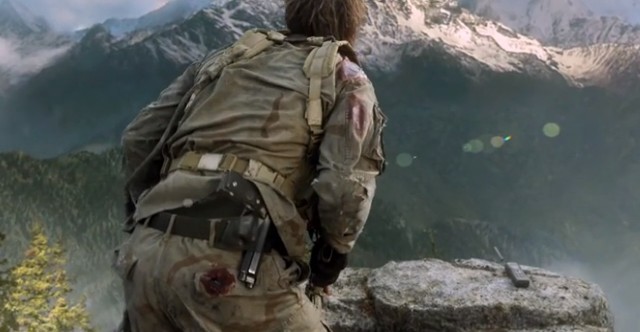
In 1985, the U.S. military switched its official sidearm from the decades-old and iconic 1911 to the Beretta M9. It was a landslide for Beretta: more than 321,000 guns and tens of millions of dollars in guaranteed orders. Being able to market itself as the official sidearm of our very discerning and globally preeminent fighting force meant even more profits in the civilian market. Beretta’s plan was plainly outlined in a 1993 Baltimore Sun interview with Robert Bonaventure, then CEO of Beretta USA. Bonaventure explained that Beretta made it a mission to win the military contract and leverage it to make Beretta a household name — a name that would get it into the law enforcement market and, eventually, the everyday gun buyer. To win the contract, Beretta’s bid charged the military a nearly break-even price of around $225 a pistol. The price tag on the gun for civilian customers who wanted the “same” pistol used by the military? About $625.
But Beretta’s grand plan jammed. Just a few years after its contract award, Naval Special Warfare units started reporting slide failures with the M9, resulting in several severe facial injuries. (Today, the myth “You’re not a SEAL until you taste Italian steel” refers to this method of Beretta testing — though, it seems the motto is more urban myth than truth.)
Initially, Beretta blamed the Navy, saying its men were firing improper rounds. Investigations found the fault was with Beretta, which had used substandard steel from Italy. Guns were rejected; Beretta appealed. A new request for bids was issued but which itself brought protest from other makers like Smith & Wesson, claiming Beretta was being treated too leniently. Government Accountability Office records from 1988 and 1989 show numerous filed protests and dismissals. Beretta ultimately moved production to the U.S., was awarded a new contract and resolved its problem.
But Beretta’s M9 rollout was the Obamacare of official military sidearms.
With its problems finally worked out, the M9 went on to have a successful operational life as America’s military sidearm. In 2012, its contract was re-upped. But both performance reasons and Beretta’s initial scapegoating of Navy operators left a bitter taste in SEALs’ mouths (pun intended). Because SEALs can carry any firearm they see fit, in 1989 SEALs dropped the Beretta that some of them had carried since 1979 and instead began carrying the SIG Sauer. They never went back.
Within the firearms trade, “tactical” has become a hot sector. The tacticalization of the firearms market can also be seen in examples like the increasing civilian popularity of military-birthed rifles like AR-15s, those guns’ highly customizable rail systems, Barrett Firearm’s .50 cal “sniper” rifles, “bull-pup” tactical shotguns, holographic sights and muzzle add-ons like suppressors (silencers) and MOLLE gear. So, so much MOLLE gear.
1. One linguistic example of how the more militarized domestic police forces are seeing themselves more and more like SEALs is how these law enforcement and SWAT units refer to themselves as “operators,” a term historically reserved for only top-tier military personnel. Another is the blurring divide between military special operators like SEALs and private contractors who fill the many cracks in the “War on Terror.” A perfect case in point is the new book Civilian Warriors: The Inside Story of Blackwater and the Unsung Heroes of the War on Terror… by Blackwater founder, and former SEAL, Erik Prince.
2. According to a Spy magazine investigation (“Steven Seagal- Man Of Dishonor”; July/August 1993), Steven Seagal — who portrayed a Navy SEAL at least twice onscreen — used to brag to people that he had been a Navy SEAL.
This boom in “tactical” has been fed in part by an increased militarization of America’s police forces that has resulted in local sheriff’s deputies conducting day-to-day law enforcement while so geared up that they are nearly impossible to distinguish from, say, soldiers involved in an Afghanistan operation like Red Wings.1 It’s a marketplace where terms like “operator” and “downrange” are now used by consumers who are not, and will never be, either. The poster children of this phenomenon are the police chief of the Chicago suburb of Waukegan, who lied on his resume about attending the BUD/S training that qualifies Navy SEALs and one Mr. Steven Seagal.2 (It’s also no surprise that even though “tactically geared” police forces may look more and more like SEALs, they are far more blundering and dangerous; the Cato Institute’s interactive map of Botched Paramilitary Police Raids is a fright to behold.)
Then came a rush of websites and blogs — like Tactical-Life.com, TacticalGear.com, “Silent Professionals” and TacticalFanboy.com — which all inventory and detail tactical products. There is nothing more “tactical” than a SEAL. The SEALs are now a booming business — Florida’s Navy SEAL Museum, founded in 1985, has seen attendance spike from just over 25,000 in 2008 to well past 60,000 in 2011, the year SEAL Team Six killed bin Laden. A product that is genuinely linked to the Navy Seals can see its sales fortunes made.
Why wouldn’t brands latch on to Hollywood SEALs for marketing? But those looking to team with real-life high-profile ex-Seals do not have many options. First, retired SEALs are generally loathe to come across as shills. There area also just not that many well-known SEALs out there. Resco wristwatches partnered with former Navy SEAL sniper and author of The Red Circle Brandon Webb. And before he was killed in Texas in 2012, ex-SEAL sniper and author of American Sniper Chris Kyle was part of Kryptek Outdoor Group’s pro staff. SOG Knives has enlisted the spokesmanship of Rorke Denver, one of the “real life” SEAL stars of 2012’s Act of Valor and author of Damn Few: Making the Modern SEAL Warrior.
Other former SEALs, like Jesse Ventura (BUD/S class 58, conspiracy loon, hurried bleeder) and Ben Smith (Tea Party birther who accused Obama of collaborating with Islamic fundamentalists), are not exactly commercially attractive. (Though, it must be said that SEALs have become very politically attractive. For example, Smith is a popular Tea Party event and National 912 PAC spokesman, and Marcus Luttrell has appeared on behalf of the NRA and endorsed Texas Governor Rick Perry for president.)
Lacking a genuine Navy SEAL endorsement is by no means a roadblock to leveraging a SEAL association. California-based weapons accessory manufacturers MFI offer a “MFI M4 Navy Seal Marked Style Fake Silencer” that will make an AR15-style rifle look like the short barrel of the M4 carried by many SEALs (including those in Lone Survivor). MFI’s “dummy can” shroud is laser-engraved with the SEAL eagle emblem. Gun maker Ruger recently released a SR1911 Navy Seal Foundation .45 ACP pistol. The limited edition of 500 pistols sold for around $1,000 each; Ruger donated $50,000 of that to the Navy SEAL Foundation. Even Airsoft gun sellers on Amazon list their replicas as “Navy SEAL Assault Rifle.” Sunglasses brand Gatorz was also quick to point out its “tactical” appearance in Lone Survivor. Gunbroker.com is filled with products labeled “SEALs.” And in a 2012 Faircount Media special publication Navy SEALs 50: Commemorating the 50th Anniversary of the Establishment of the U.S. Navy SEALs, Universal Pictures took out a full page ad saluting the anniversary and the SEALs on behalf of the entire cast and crew of its 2012 film Battleship. Peter Berg directed that film before Lone Survivor; Universal bought the rights for Lone Survivor in 2007.
Meanwhile, Beretta, barring a real life association with the SEALs, is hoping to reach armchair operators by paying to put itself in the hands of Hollywood actors pretending to be real-life SEALs. Lone Survivor was not their first shot.
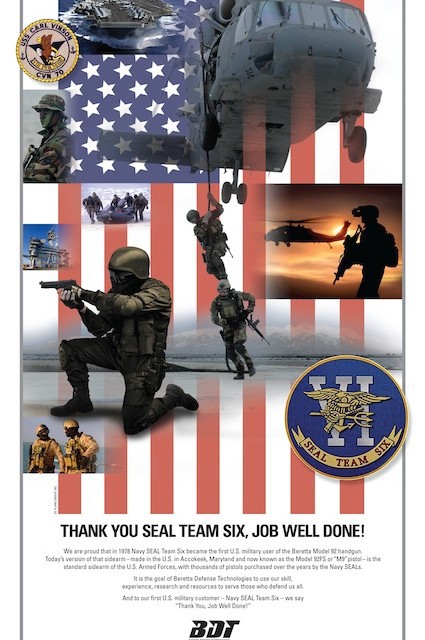
In the immediate aftermath of the 2011 killing of Osama bin Laden, Beretta rushed out an advertisement congratulating SEAL Team Six on a “job well done!” The ad featured non-SEAL operators wielding the Beretta M9. The ad’s accompanying commentary:
“Beretta shares a close association with the U.S military, particularly Navy SEAL Team Six, having intimately collaborated with members of the team during the initial design phase of what would become the venerable M9, the official sidearm of the U.S. Armed Forces. The SEALS recognized Beretta’s skill, experience, research capabilities and resources, and it is those same benchmarks that Beretta Defense Technologies continues to utilize today as they strive to serve those who defend freedom around the world.”
A person reading that would almost think SEALs carry Berettas. That’s surely Beretta’s hope. And if that wasn’t enough, Beretta’s ad had the balls to credit with collaboration the same group that it tried to blame during its failures in the late 1980s.
It’s definitely worth noting that some SEALs see the whole thing as a tempest in a teapot. Don Shipley, the wildly charismatic former SEAL behind Extreme SEAL Experience — and host of an entertaining and necessary weekly Youtube series that publicly outs and embarrasses fake Navy SEALs — told me it’s no big deal. Shipley, who considers himself a friend of Luttrell’s, said he understands that Hollywood is going to be Hollywood. He said it’s only the gun obsessives who key in on the detail.
Beretta is well aware of the power of film over reality. In his 1993 interview, Beretta’s Robert Bonaventure pointed to successes the gun maker had in the films Lethal Weapon and Die Hard. More recently, Beretta has used Twitter to point out its product placements, like in Mr. and Mrs. Smith and “The Walking Dead.” (Ironically enough, Berettas were also the sidearm of choice in the silly, Charlie Sheen-helmed 1990 film Navy Seals.) Luttrell is certainly aware of the power of film. In an interview with Fox News, the author said, “No matter how many times I get up and tell (my story), or how many people read the book, it’s nothing compared to how many people will watch this film.”
Having an awesome dinner w/ video crew taking about Lone Survivor.
— BERETTA (@Beretta_USA) June 8, 2013
Then there is the fact that Beretta has cozied up to Lutrell since he retired from carrying a SIG Sauer as an active SEAL. Going back to 2009, Beretta has sponsored Luttrell in its Outdoor network show “Wild and Raw,” a hunting series in which Luttrell and others “put the line up of Beretta guns and gear to the test.” Also, Beretta donated $5,000 to Lutrell’s Lone Survivor Foundation. (Under Armour — which was also, dubiously, all over in the film — is a Lone Survivor Foundation supporter and last year partnered with the organization for an elaborate Lone Survivor Texas Tech college football uniform.)
Beretta did not reply to requests for comment. Despite a willingness to boast online about “successfully integrating Beretta into Lone Survivor,” when reached for comment, Brand-in Entertainment refused to answer any of my questions. Luttrell’s representatives told me he was only a consultant and suggested I call director Peter Berg’s production company. (In addition to appearing in two uncredited roles in the final film, Luttrell used numerous interviews to talk about his close involvement in the film.)
In the meantime, Lone Survivor’s huge box office has Hollywood on the hunt for similar tales of real-life SEAL valor. The late Chris Kyle’s life story is already in production with Clint Eastwood and Bradley Cooper. Fearless, the story of the late SEAL Adam Brown, has also been mentioned. Probably not on the radar is the recent story of Brett Jones, the SEAL whose operational career was ended when the Navy discovered he is gay. Plenty of new projects for Beretta’s Hollywood representatives to be on the lookout for.
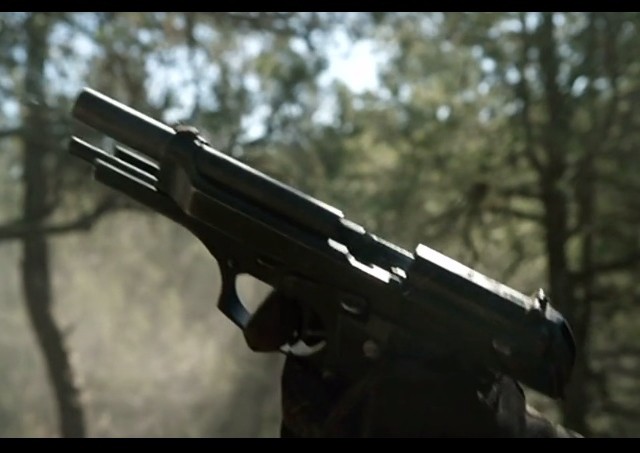
In the end, there is one real-world incident involving a SEAL endorsing a Beretta that might interest the gun maker. In a senselessly dreadful event in 2009, two men shot Marcus Luttrell’s dog DASY. (The name was an acronym for his team members.) While pursuing the shooters at high speed, Luttrell called 9–1–1, informing the operator he was armed and giving chase.
“What kind of gun do you have?” asked 911.
“I got two 9 millimeter Berettas,” Luttrell said.
Endnote: The vast discrepancies between what happened during Operation Red Wings, the events Marcus Lutrell described in his book, and the fantasy finally portrayed in Mark Wahlberg and Peter Berg’s film has been vivisected in excruciating detail by the excellent blog On Violence. It’s a must-read to understand “anti-military Hollywood” posturing and how a tragic battle during our nation’s most complicated and longest war is reduced to a Department of Defense recruiting film. And, of course, a chance for a U.S. gun maker to market some pistols.
Abe Sauer’s latest book is the north woods parody “Goodnight Loon.” He is also the author of the book “How to be: North Dakota.” Email him at abesauer @ gmail.com.
New York City, February 19, 2014

★ Morning was simultaneously mild and raw, the arctic harshness replaced by a damp chill coming off the snowpack. The view from the prospective apartments was mud-colored all around. A BMW, unable to wait behind a garbage truck, pushed through a slush pile and sped the wrong way down a one-way street. The dark gray grew darker, and some sort of rain began to fall and steam on the driveway. The raindrops were splatting, or maybe it was the dripping meltwater that was splatting; the falling wetnesses were undifferentiable and terrible. Downtown, it was a full, drenching rain. Umbrellas were out. The non-rubber boots were wet, the jeans were wet. It was tempting to jaywalk to get out of it faster, but the ice banks on the far side of the street offered uncertain passage. There was a bearable moment of afternoon sun, when it was possible to stand on the fire escape in short sleeves, smelling something organic on the warming air. But by evening the dripping rain was back again. The newly bought umbrella pinched a finger, the wet ice was slippery underfoot, and the puddles were so wide as to be almost impassable.
The Fecal Transplant Bank
If you are the kind of person who cannot read a headline like “First Fecal Transplant Bank Opens” without giggling and coming up with sophomoric jokes I don’t know what say other than no matter how distasteful or uncomfortable you find feces to be this is actually something that will save lives, and your scoffing at it only reveals a massive level of immaturity which should be deeply shaming to you. Also, I bet you will love our “doody” tag.
It Seems Impossible, But The Internet Is About To Get Much More Annoying

“You may know what a gigantic pain in the ass it is to take a YouTube video and turn it into a passable GIF to share online. Well, you are going to fall in love with, and then want to to marry, and have children with, and grow old with Gifff.fr. From YouTube link into GIF in three easy steps.”
A Poem By Josh Bell
by Mark Bibbins, Editor
Vince Neil’s Apologia Pro Vita Sua, As Transcribed by Josh, in a Crowded Hotel Bar One Afternoon, Being a Poem Spoken in the Future, During the Upcoming AWP Conference of 2014, in Seattle, Washington
1.
Of the latter heroes I was most
supine, handed out
warnings to women who were pregnant
or were likely to become pregnant,
hope tucked bloodless
into saddlebag, neither hunter
nor borrower, sometimes
referred to myself as It —
as in charity is
its bird machine — a strap-on fashioned
out of bits of the foregone cross
coming at me from the future
in the tiniest and the most
lineal of dreams, my preferred
haruspex pondering
her retirement and my new
address as quickly
dirty as the last, in times of war
immune to alarum,
at least fifteen minutes away
from sword and armor, the valves of my heart
opening and closing slowly
like the wings of a new butterfly
at rest upon the battlements
of overweening Troy, and all
the maidens and immortals
2.
and the handful of princes who,
in those days, took time away
from their own troubled narratives
to stop and save me from myself or from
the ancient boy-scout Death
are now themselves long dead
by natural and/or
mythological causes. Don’t mention it
they seemed to say with their great
careful bodies
as they turned them from me in departure.
Don’t mention it and drifted leonine
and smooth toward the assault
on their promised
constellations and perhaps
the foreign-funded rebellions
of their homicidal children,
got upon or beneath majestic animals
and graduate students, ears crisp
but not always white
as snow. And where was I — year
of the jellyfish, cossacked,
bowing feastless
before capital — when they
in their turn required me
3.
and I heard them cry out for me
from the dust that their fallen bodies made
in the dust, even better
and taller destroyers looking down
upon them, their lives an end-note
of snuffed out goat-bone, free-range
angels slumped out
on conveyor belts, felled
by slotting bolt in a rusty hank
of factory-light, and by the transitive property
and a million miles away
a flower of blood popping
from the dashboard
of my Camaro? No, you haven’t
4.
heard all of this before,
dirtlings. Moreover
there’s something not quite real
about sex dolls. They can’t
be strangled to death
5.
and the conditions for such
an act, the aura of its chance, like
gravity, makes the minimalism
of the vestibule
a possibility. If you don’t like
the vestibule, then what about
the service elevator, where tonight we’ll strangle
down so easily? Also, the zombie prostitutes
and hustlers, who have laid up
like sandwiches
for hours beneath heat lamps
in order to trick me, with their customized
temperature, that they are living beings to kiss
when they arrive at my hotel door
is one of those bad dreams
spoken of, above. In those days
of the dream, and of the various
kingdoms of conscience, I was set on taking
only baths, as in the shower
it was too easy to cry
over the specifications, and kept track
of war and politics
as one does the deeds
of distant cousins. Who’s the blond
is what I said to myself, then, when I saw
my picture, for the first time
in the record store, wearing my stage-clothes
and the wig of Viking sex-goddess
6.
on the cover of the first album
and winking back up
into my face. It was the me
before, it was the me
pictured, and then it was the me
confused and aching for me
after realizing I was me, that it
was me, that charity was
its bird machine, that its soul
had been lifted from out of its body
as if borne up between
the teeth of a giant
black wolf. Like a lot of goddesses
I spent much of my youth
avoiding rape. It wasn’t a soul, really,
but how else, like a penitent, to talk
about the way the wolf
was eating it? I don’t think it’s true
that you owe a debt to those
who’ve saved your life, that your life is theirs
until the favor is returned. The chance
at favor rarely comes
unless you’re in the movie
of favor, and no matter, as once
someone saves you
they can no longer exist
truly for you, you a check
in the win column, it is like they are suddenly
7.
a whale now, shooting between
exoplanets, it is like making out
with a galleon, it’s a problem to have
a decent conversation or a lunch
with those who have
delivered you. If you’re not into
the vestibule, then what do you think
about the Holy Roman Empire? And when
the witches say be you full of Jove
then be you full of Jove. Don’t make me repeat myself
in front of the poets. Who wouldn’t want to stay
8.
the same size forever
and in successive contexts, so much better
the love object dead
than alive and unable to speak to me normally
in the manner of things
that marry with the other things
and without debit. I can’t go on, Josh,
unless I’m told if that bartender
is a woman or what? And this is also why
I will refuse to save the rest of you,
you Richards and you Kimberleys, notebooks
holstered, chipping like you said
at the lexicon. But also I would
like to focus on another you, that’s right
9.
you with the feather in your teeth out there, you
breathing in the dark beyond
the mis en page, future you, first-person-
limited-omniscient, maybe living
in the lunar colonies, where you weigh
the pros and cons of making war
against the empire
of the planet Earth. You don’t
want to pay your taxes either,
and you are fortunate
to be reading this, thumbing it open in front
of your face, holding inside your chest
and hidden far from my eyes
the vulnerable power-core
of your secret wished-fors, time’s
quilted darling, why are you so strong
out there at the edge of minutes
10.
looking back at me
so dead? You vivid
and gazing out of the bright, blue windows
of Castle Fuck-Me, you considering all of this distraction
like it is wrist-watches
or the faces of the swept-
of-fish-free-seas of your former
home the Earth. You are all
that can be thought of, like a wedding reception
after the bride and groom
have retired for the night, so dangerous
and explicit. It’s not paranoia. The entire universe
is out to get you pregnant. Ramona, Ramona,
11.
why is it me
pretending to be Josh
this time around? Josh, writing up
his inaugural poem. Josh
12.
in the kitchen
with usura. I can feel it, the blood he donated
to me, yesterday, in the blood-
mobile, that blood skipping new
like a little colt inside me. Some people believe
that the name we give
to the planet Earth
is too plain, but the plain-ness of the title
makes the planet easier to miss. Another strategy
is to wear the same clothes, like
a uniform, day after day, so that those days
seem like one day
which will never end. You won’t believe it,
but I used to be alive
outside of books, in a life which crossed
uncomprehendingly
between two centuries:
in the first century, some things happened
which were too far away
and in the second, some things happened
which were too close. And once in there,
when I was young, more hungry
than patient, I thought I bit into
a carrot stick, but instead
and growling bit into my finger, both predator
and prey. Shame is a big part
of being eaten alive, and because of it
I have been dining at home now
for 1001 nights, not mature enough,
conceptually, to have
any dealings with the true
human body. Now I think you’re getting a better sense
of what my being is. Yes officer, I was angry.
All life not within my immediate survey
was a lie. Little horse, little horses,
13.
I swear the Earth
was still breathing when I left it.
Josh Bell is the author of No Planets Strike and is Briggs Copeland Lecturer on English at Harvard University.
You will find more poems here. You may contact the editor at poems@theawl.com.
Format Embraced
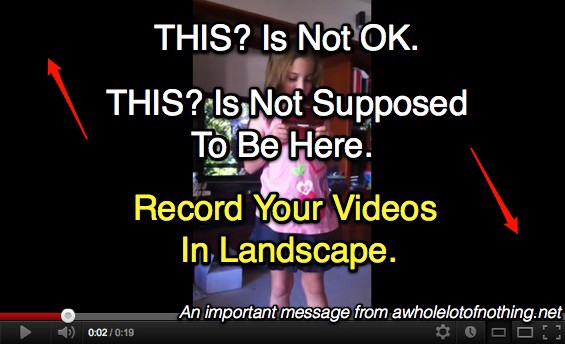
“Vertical vs. horizontal is a huge debate in the online community. Due to YouTube aspect ratios, most people believe all videos should be shot with your phone on its side, creating the familiar horizontal image like you’d see in a movie theater. If you shoot the footage vertically and then upload to the web, there are huge black spaces on either side, making the footage look amateurish and small. But there’s a movement embracing the vertical format, and nowhere is it seen better than Rotterdam in the Netherlands. There, a group of filmmakers have started the Vertical Cinema project — a traveling film festival featuring movies specifically shot with a vertical orientation.”
Photo via
Lucky Louie

In the flatlands between Mill Basin and Marine Park, just before the avenue arrives at the golf course and Jamaica Bay, you’ll find VERG South, an emergency hospital for pets. Inside is a dog, which isn’t very surprising, this being a place for treating dogs and cats. Only this dog is famous.
The dog came to VERG — that’s Veterinary Emergency and Referral Group — in a roundabout way. First the dog arrived at a vaccine clinic, probably hosted at a PetCo; the story is fuzzy at the beginning. One thing is certain, and terrible: the dog had owners. They brought him to get shots, which they thought might cure him. He was clearly very, very sick. Shots wouldn’t fix him. A veterinarian at the clinic saw the dog that wasn’t so much a dog as it was a bag of bones and knew she needed to step in. So she called Sean Casey, who does animal rescue all over Brooklyn. He came by at the end of the day, saw the pitbull mutt, saw that it was in a bad way, and told the owners they needed to relinquish their dog, that is: give it up. It wasn’t hard to do. He just told them how much medical treatment the dog would need, and how expensive that would be, and how neglectful they had been. Casey took the dog from them and named him Louie.
Louie went from PetCo to Pet Haven, another clinic, where he lived for three days. While he was there, another veterinarian, Dr. Ford, took a picture of Louie and posted it to Facebook under which she wrote something like this is upsetting, people are terrible. Brett Levitzke, the medical director at VERG, saw the post and pictures of the dog and got really upset too. Levitzke has a springer spaniel named Toby and a cat named Broccoli. He got so upset at the pictures of Louie (emaciated, pockmarked, pitiful) he decided to take on the case, the case being Louie. That’s how Louie came to VERG South out near Jamaica Bay.
What you have to worry about with a dog that’s been starving all its life is the the same thing you worry about with a starving human — a problem called refeeding syndrome. The patient’s body cannot process the sudden influx of food, becomes overwhelmed, and the patient dies. So the team at VERG had to be careful about how to go about feeding Louie. This wasn’t a problem on Louie’s end. His teeth were broken (from trying to eat rocks, most likely), he had worms, he wouldn’t drink, and he couldn’t lift his head, much less walk. He was just in rough, rough shape, everyone recalled. But the thing about this dog in particular was that he was so, so trusting. They had no idea what his past life might have been like, what abuse he suffered, but his eyes stayed bright and alert all the way through. You could tell by his eyes he knew what was going on, but he couldn’t move, could barely lift a paw, much less his whole head. He was maybe 10 months, a year old at most.
They started him on fluids, calculated out how much food they could give him, tiny amounts, day by day. For the first ten days his tail stayed tucked between his legs. They put him through physical therapy, which was really just holding his body in place and moving his limbs, to begin to get his muscles back. They put him on antibiotics, which they delivered through a steam mask. They rubbed and smacked his chest to break up the fluids caught in his lungs from pneumonia. They bathed him, repeatedly, because he smelled awful. The first breakthrough came when he started to walk again. There’s a video of that moment. He only takes a step or two on his own, and the steps are wobbly and unsure. He looks a little like a newborn deer.
VERG’s head of communications, Maria Moss Davidson, shot the video, and still takes lots of photographs of Louie, which she posts on Facebook and Instagram. “He’s kind of been my life for the last month,” she said. This is how Louie became famous. He’s photogenic. Those puppydog eyes, that wrinkled brow, he looks thoughtful and trusting and extremely sweet. Likes piled up by the thousands. People from all over the U.S., and then the world, wrote VERG. Many wished to adopt. A woman from Sweden persisted and had to be told, well, this wouldn’t be the best thing for Louie, seeing as he’d have to sit in quarantine for months just to enter her country. Also the fact is Louie wasn’t quite ready to go.
Louie has a parasite still, and they’re treating him for diarrhea. He weighed 11 pounds when he first came in to VERG; he weighs just a hair over 30 pounds today. He’s nearly at optimal weight, but not quite leash trained, and not at all house trained. He has the run of the hospital. King Louie is what they call him now. They aren’t ready to let him go, either.
“I think he gives people hope, something to believe in,” Davidson said. “We’re kind of going through a… I don’t know how to put it… an emotional thing. It’s hard for us to let go of anything right now.” One of their colleagues, Dr. Danny Gray, has had non-Hodgkin lymphoma for some time. He died this past Saturday. “This dog is just bringing so much joy. We can wait a few more weeks. It’s not like he doesn’t get the run of the hospital.”
Louie is incredibly food motivated, which means he’ll do just about anything for a treat, which means he can do some pretty good tricks. Sit, shake, and weave, but he can really only do the weave with Marina Kviker, who’s an assistant at the hospital. She’s the one holding Louie up in the photo above. “Weave, weave, weave,” Kviker said at the end of each of her strides, pausing when her foot hit the floor so that Louie might lower his head and dash between her legs. Davidson asked: “The way you point your toes, you used to be a dancer?”
“In a previous life, yeah. Ballet,” Kviker said. She’d like to bring in a hurdle and tunnel so she can do serious agility training with Louie. “He’d be really good at that,” she said. Kviker has been training dogs since she was 10. Just dogs in the neighborhood, then puppies that could become seeing eye dogs. “Now I only take on interesting cases,” she said. “A puppy is boring. My dog tries to eat people, or is terrified of everything — that’s interesting. What works is very, very slow desensitization, which means that if a dog attacks skateboarders, you get a skateboard and roll it across the floor very, very slowly, never going to a point where the dog is overwhelmed. And lots of food. Whatever motivates that dog, it doesn’t have to be food, but I’ve only met one or two dogs where food didn’t work.” She finished doing the weave trick.
“I really want this dog, but I can’t have this dog,” she said. Louie stayed close beside her, slumped against her legs, panting contentedly, his head just above Kviker’s left kneecap. “I want to go to vet school maybe, and I can’t drag two dogs across the country, or the world. It’s going to be hard enough with my dog. He’s 13. I use him a lot with dogs who are special cases, who are terrified of other dogs, because he doesn’t care about anything. This dog” — that’s Louie — “this is what I would call a boring dog. There’s no challenge. This dog would be really good if someone were to do freestyle, where they like, dance with the dogs. He might also make a good therapy dog. He likes people so much.” Then she looked down at him, and he looked up at her. “You get dogs who are so badly abused where you’re like, ‘Oh God, when this dog gets better he’s going to eat everyone,’ and then they end up like this. Honestly I don’t know why people are so shocked by his progress. He was starving and we fed him.”
Ryan Bradley is a writer and editor in New York.
